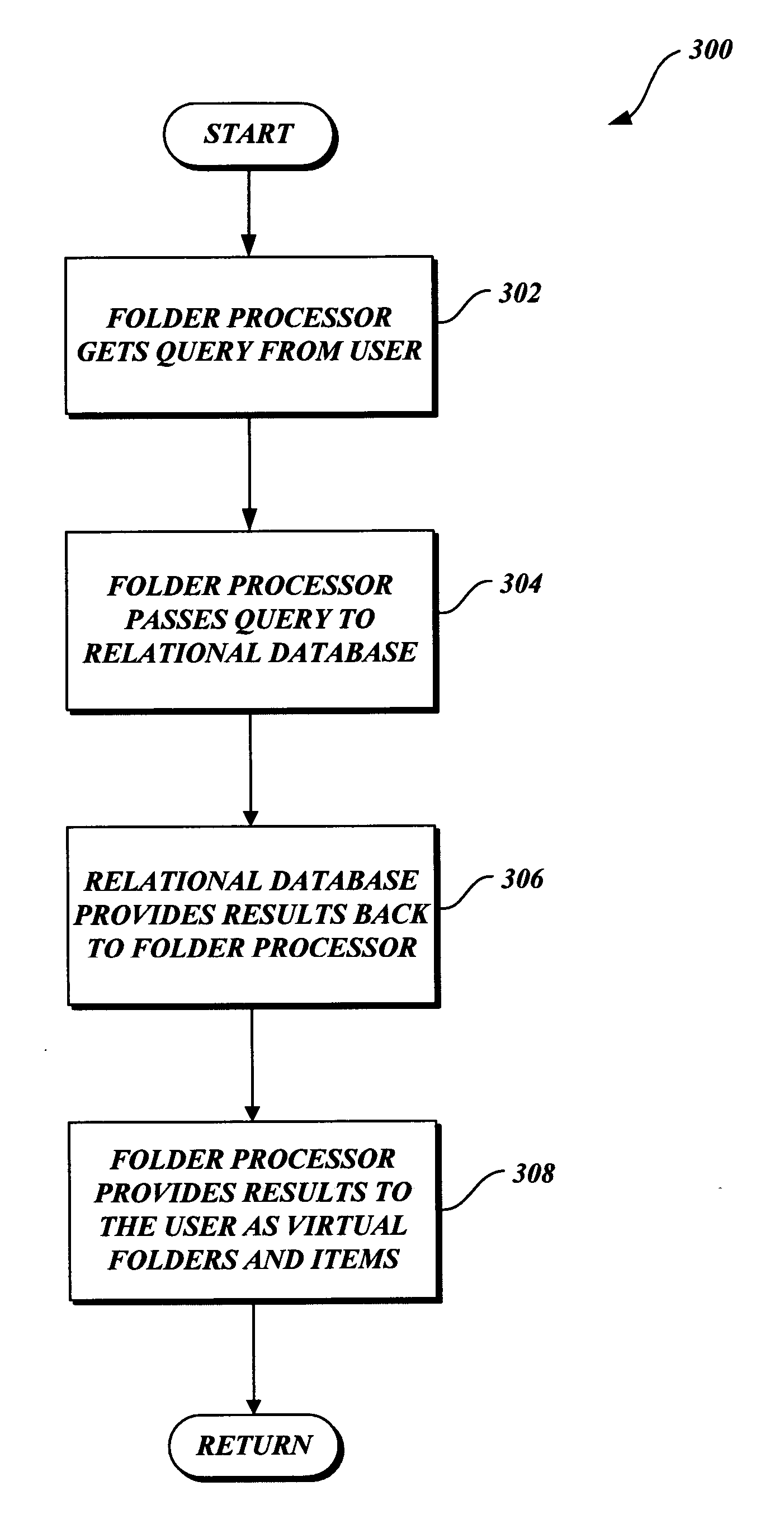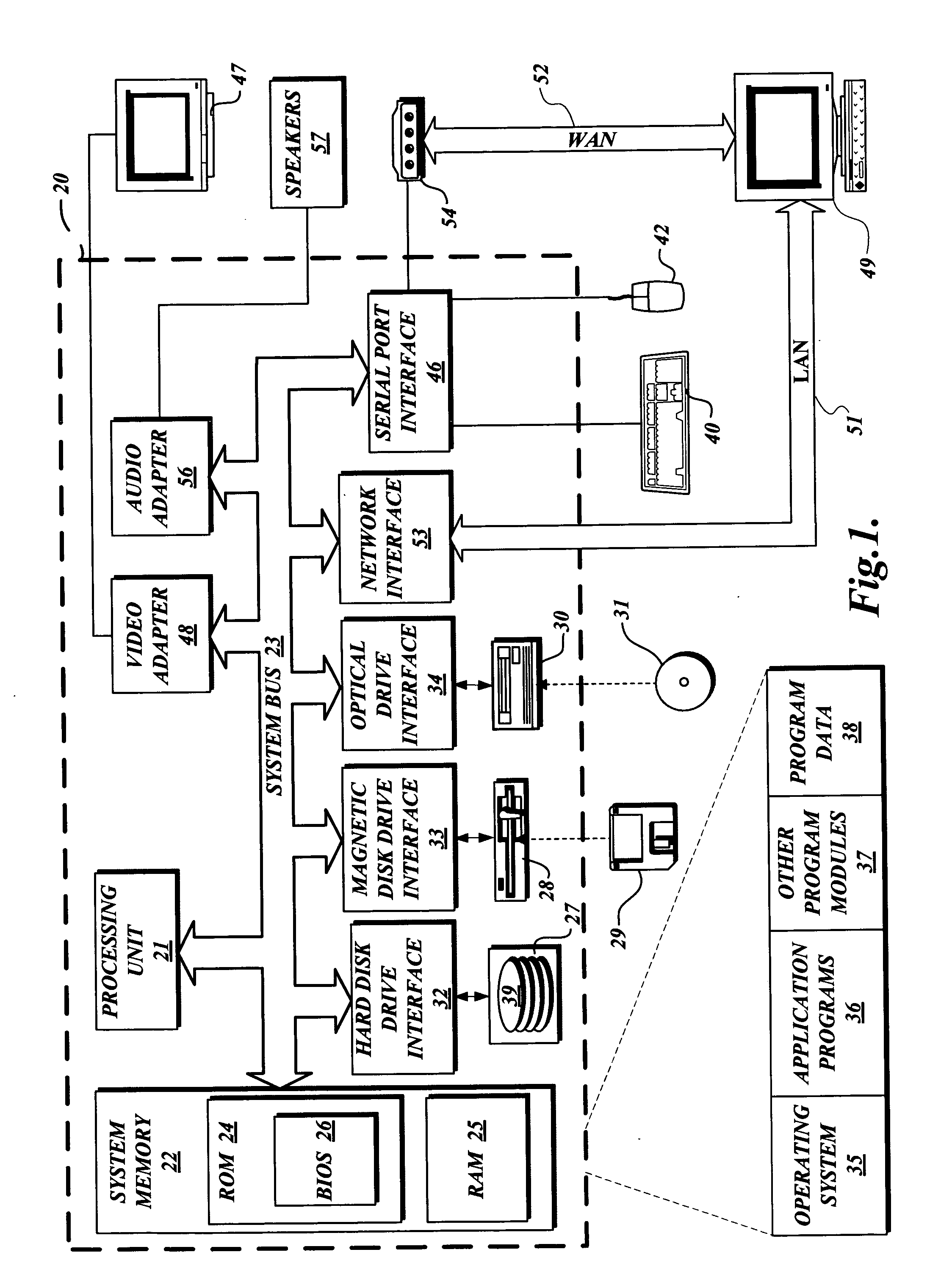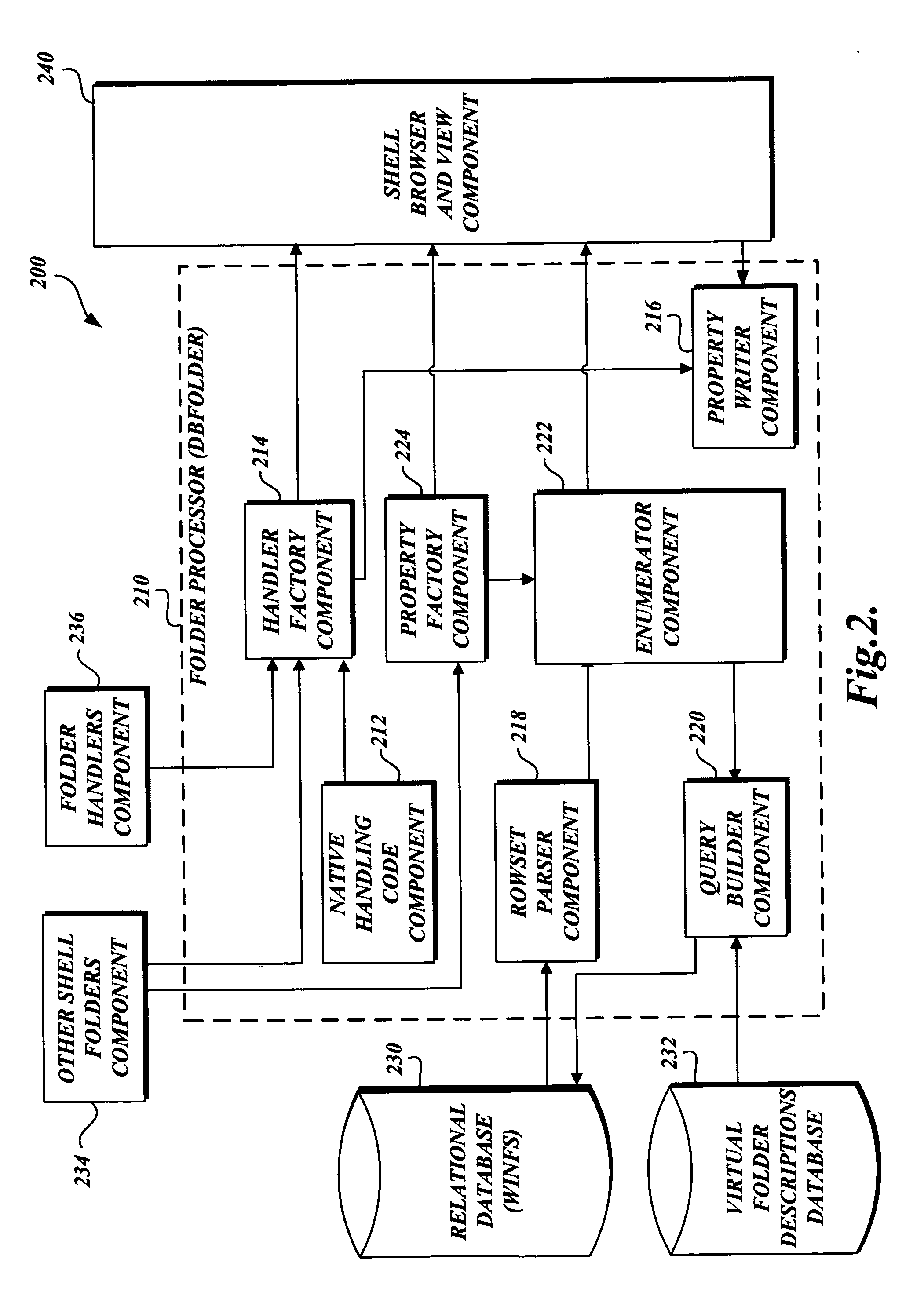System and method for filtering and organizing items based on common elements
a technology of filtering and organizing items, applied in the field of system and method for viewing items, can solve the problems of difficult change of structure, user inability to control the structure, and undesirable limitations of computer file systems
- Summary
- Abstract
- Description
- Claims
- Application Information
AI Technical Summary
Benefits of technology
Problems solved by technology
Method used
Image
Examples
Embodiment Construction
[0067] The present invention is directed to virtual folders. Virtual folders utilize the same or similar user interfaces that are currently used for file systems. The virtual folders expose regular files and folders (also known as directories) to users in different views based on their metadata instead of the actual physical underlying file system structure on the disk. Location-independent views are created which allow users to manipulate their files and folders utilizing similar controls as those presently used for managing file systems. In general, this means that users can organize and rearrange their files based on inherent properties in the files themselves, instead of the managing and organization being done as a separate part of the system. The virtual folders may represent files or items from different physical locations, such as from multiple disk drives within the same computer, between multiple computers, or different network locations, such that one view of files or ite...
PUM
 Login to View More
Login to View More Abstract
Description
Claims
Application Information
 Login to View More
Login to View More - R&D
- Intellectual Property
- Life Sciences
- Materials
- Tech Scout
- Unparalleled Data Quality
- Higher Quality Content
- 60% Fewer Hallucinations
Browse by: Latest US Patents, China's latest patents, Technical Efficacy Thesaurus, Application Domain, Technology Topic, Popular Technical Reports.
© 2025 PatSnap. All rights reserved.Legal|Privacy policy|Modern Slavery Act Transparency Statement|Sitemap|About US| Contact US: help@patsnap.com



